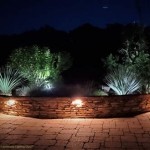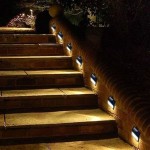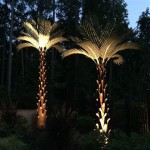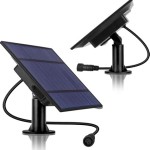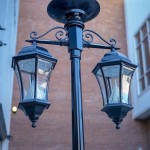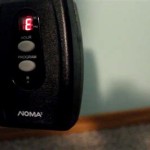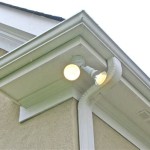How Many Lights For Outdoor House?
Illuminating your outdoor space is an essential element of any home design. Outdoor lighting not only enhances safety and security but also creates a welcoming and inviting atmosphere for guests and family members alike. But determining the right number of lights for your outdoor space can feel overwhelming. This guide will provide you with a comprehensive approach to planning your outdoor lighting, taking into account factors like functionality, aesthetics, and budget.
Determining Your Needs
Before diving into the number of lights, it's crucial to understand your specific needs. Ask yourself these questions:
- What are the primary purposes of your outdoor lighting? Is it for safety, security, ambiance, or a combination of these?
- Which areas of your outdoor space do you want to highlight? Are you focused on pathways, entryways, landscaping features, or the overall exterior of your house?
- What is your budget for outdoor lighting? Different types of lighting have varying costs, and understanding your budget will help narrow down your options.
Once you've considered your needs, it's time to move onto the actual planning stages. You can choose from a variety of lighting styles, each with its own benefits and drawbacks.
Types of Outdoor Lights
A comprehensive outdoor lighting scheme often incorporates a combination of different types of lights:
Path Lights
Path lights are essential for illuminating walkways and driveways, ensuring safe navigation, especially at night. They are typically low-voltage, energy-efficient, and easily installed along pathways. Consider using path lights along the edges of your yard, leading to different areas, and providing soft ambient illumination.
Safety Lights
Safety lights are designed to deter intruders by providing bright illumination around vulnerable areas such as doorways, windows, and garages. Motion-sensor lights are particularly effective for this purpose as they activate when movement is detected, illuminating the area and potentially deterring crime. Install safety lights strategically at your home's perimeter.
Accent Lights
Accent lights are used to highlight specific features of your landscaping, such as trees, shrubs, or water features. These lights can be placed strategically to create visual interest by emphasizing textures, colors, and shapes. Accent lighting often employs spotlights, uplights, or string lights, depending on the desired effect.
Flood Lights
Flood lights are used to illuminate large areas, such as patios, decks, or outdoor dining spaces. Flood lights can be large and powerful but can also be used to create a dramatic effect, especially when paired with dimmer switches.
String Lights
String lights are ideal for creating a festive and welcoming ambiance, often used for special occasions. They come in various styles and colors, providing a soft and decorative glow. Hang them over patios, around trees, or along fences to create a magical atmosphere.
Planning Your Lighting Design
Once you have identified your needs, you can move onto planning your lighting design. Here are some key considerations:
Planning the Layout
The layout of your outdoor lighting is crucial for ensuring proper illumination and creating the desired aesthetic. Consider the following:
- Focal Points: Highlight important features of your yard, such as a patio, a water fountain, or a beautiful tree.
- Walkways and Driveways: Ensure safe navigation with path lights, spaced evenly along the path.
- Security Zones: Place safety lights strategically to illuminate vulnerable areas.
Choosing the Right Light Bulbs
The type of light bulb you choose will significantly impact the aesthetic and functionality of your outdoor lighting.
- LED Bulbs: LED bulbs are known for their longevity, energy efficiency, and bright light output. They are also available in various colors and color temperatures, allowing you to fine-tune the ambiance.
- Halogen Bulbs: Halogen bulbs are brighter than traditional incandescent bulbs but consume more energy. They are often used for safety lights due to their bright white light.
- Incandescent Bulbs: Incandescent bulbs are affordable but not as energy-efficient as LED or halogen options. They emit a warm, yellow light that can be cozy but may not be ideal for all outdoor spaces.
Lighting Control
Consider how you want to control your outdoor lights. Options include:
- Manual Switches: Basic manual switches offer direct control but require you to manually turn lights on and off.
- Dimmer Switches: Dimmer switches allow you to adjust the brightness of your lights, creating various moods and ambiances.
- Timers: Timers automate the turning on and off of your lights, making it convenient to set schedules for specific times of the day or night.
- Motion Sensors: Motion sensors automatically activate lights when movement is detected, ideal for safety lights and enhancing security.
- Smart Home Integration: Smart home systems allow you to control your outdoor lighting remotely, using your phone or voice commands.
By thoughtfully considering your lighting needs, exploring the various types of outdoor lights available, and planning a strategic layout, you can create a beautiful and functional outdoor space that enhances your home's safety, security, and aesthetic appeal.

How To Calculate Many Lights You Need

Outdoor Lighting Guide Exterior Tips And Tricks

How To Calculate Many Lights You Need

The Ultimate Guide To Outdoor Lighting How Many Lumens And Watts Do You Need Govee

How Many Lumens Are Needed For Outdoor Lighting The Home Depot

How Many Lumens Are Needed For Outdoor Lighting The Home Depot

How Much Energy Do Outdoor Led Lights Really Save Lighting Perspectives

How Many Lumens Do I Need For Outdoor Lighting Simple Blog

Guide To Outdoor Lights Balsam Hill

Home 101 Why Your House Needs Outdoor Lighting Across America Us Patch
Related Posts

